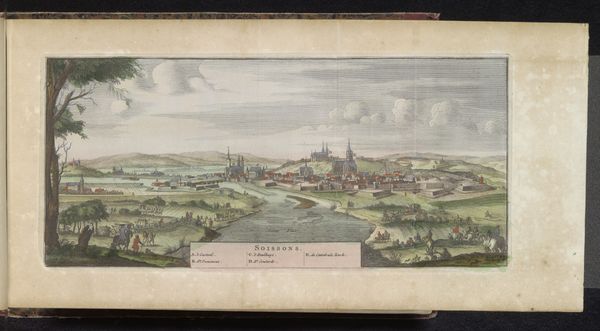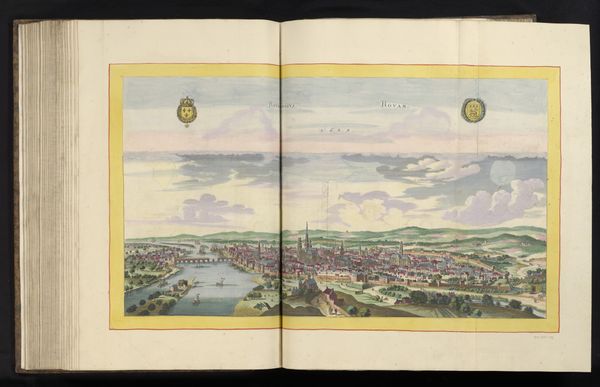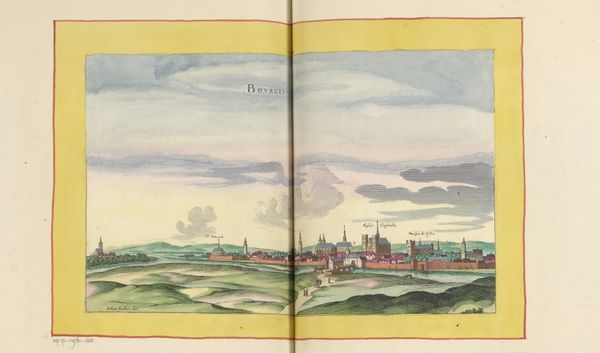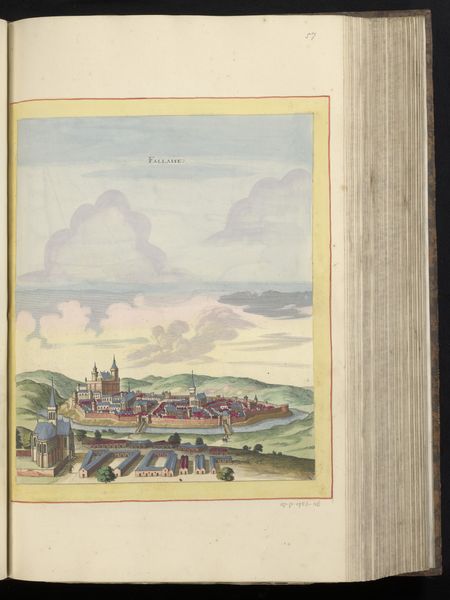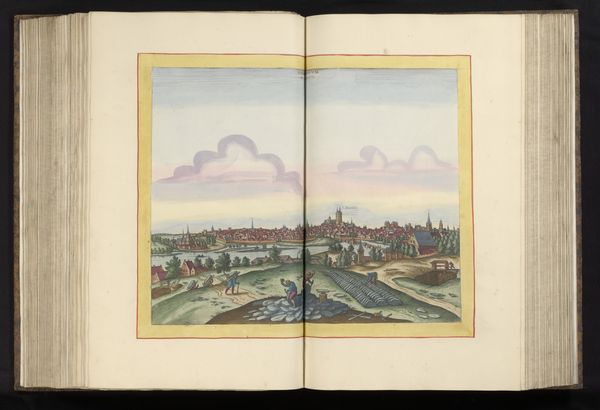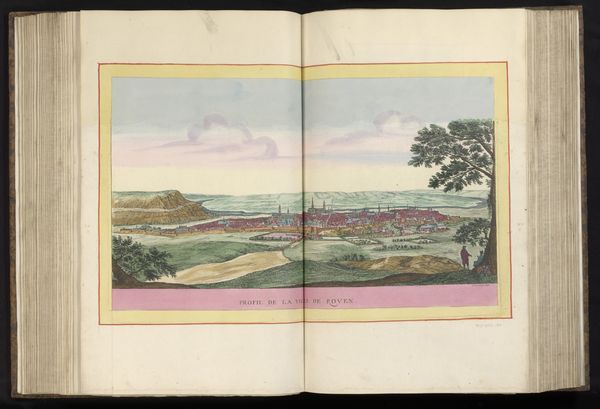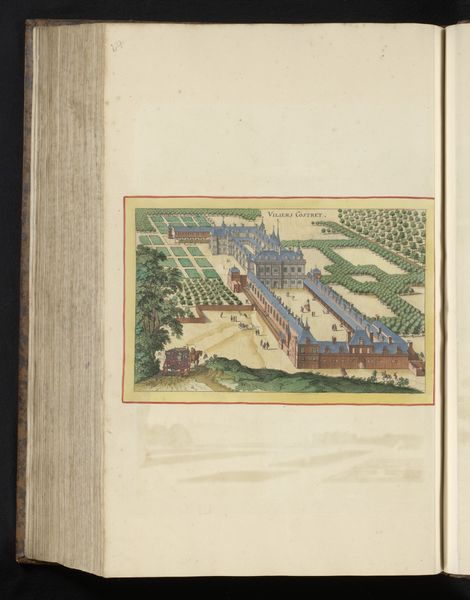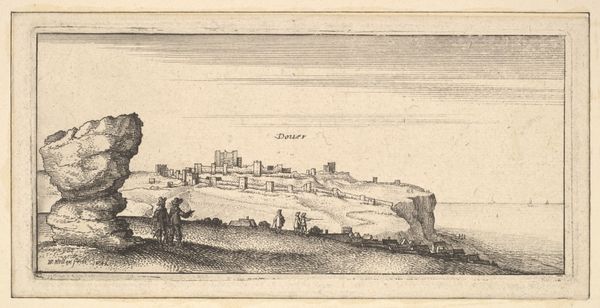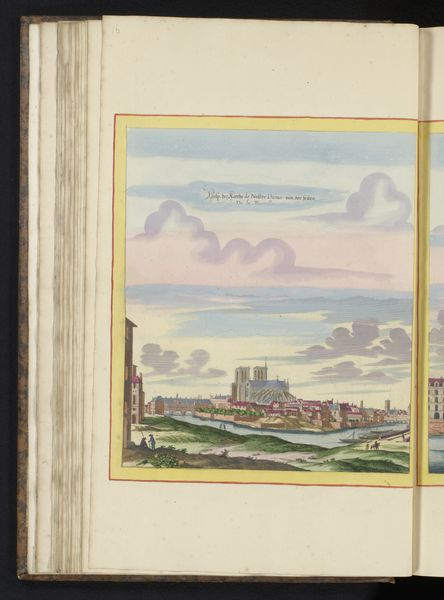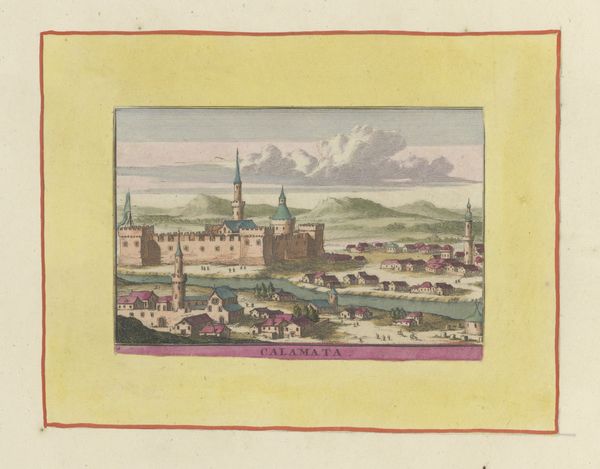
#
aged paper
#
toned paper
#
homemade paper
#
sketch book
#
personal sketchbook
#
coloured pencil
#
sketchbook drawing
#
watercolour illustration
#
sketchbook art
#
watercolor
Dimensions: height 172 mm, width 307 mm, height 532 mm, width 632 mm
Copyright: Rijks Museum: Open Domain
Curator: Looking at this artwork, “Gezicht op Saint-Quentin,” from 1656, made with watercolor, what’s your first impression? Editor: It’s delicate! The colors are muted, and the composition, split across what looks like an open sketchbook, feels very intimate. It makes me think about the personal experience of observing and recording a place. How do you read this piece? Curator: Well, I see a direct engagement with the *making* of knowledge and the control over resources required for documentation. Notice the use of watercolor. It's portable, relatively inexpensive compared to oils, allowing for on-site creation of images, facilitating the dissemination of visual information about territory, trade, and even military intelligence. The labor invested in creating homemade paper also speaks volumes about resourcefulness, doesn't it? Who had access to what? How did that affect the final image? Editor: I hadn’t considered the paper itself as part of the meaning. You're right. What was involved in producing these materials? Were they readily available? I guess I always just considered it a drawing, not a carefully constructed artifact made from distinct materials. Curator: Exactly. Consider the social conditions. This wasn't simply a neutral record of the town. The artist’s selection of viewpoint, their control over the pigments, the very act of recording – all reflect a particular way of understanding the world, which was intrinsically linked to access and skill. How might the subject's relation to the water depicted reflect Saint-Quentin’s relationship to larger trade networks at the time? Editor: So, by analyzing the material reality of the artwork, we’re actually uncovering larger historical narratives and the distribution of resources. That’s a much broader perspective than I had initially. Curator: Precisely. Looking beyond the image itself to the conditions of its making allows us to see art as part of broader social, political, and economic systems. Editor: I'm beginning to see how important it is to consider how art is made, and who had the resources to make it. Thanks for widening my view. Curator: My pleasure. It’s all about understanding the material world that produced and continues to shape the artwork before us.
Comments
No comments
Be the first to comment and join the conversation on the ultimate creative platform.


